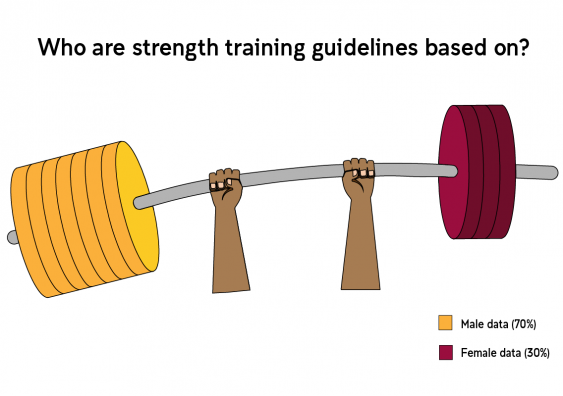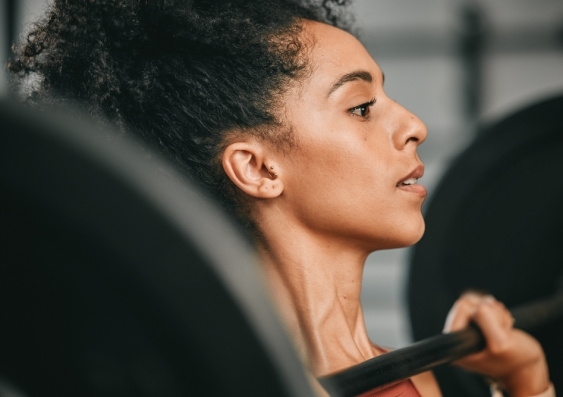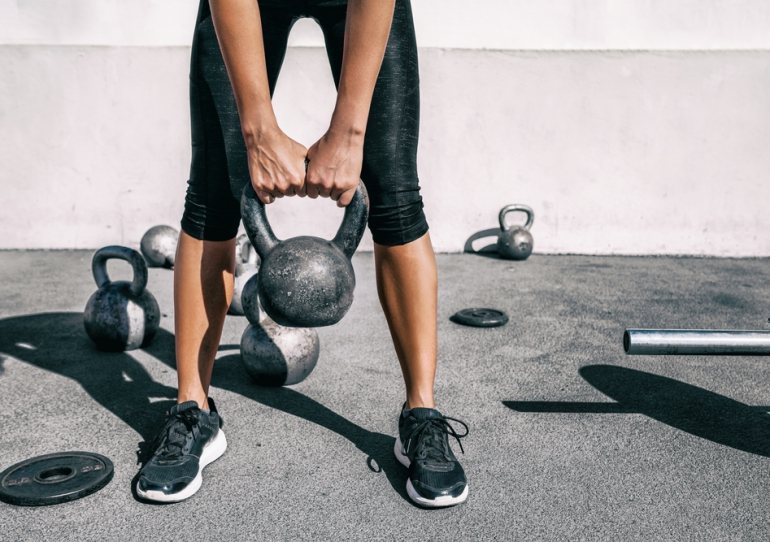If you strength or resistance train, chances are the ins and outs of your workout – like what weights to lift, how many repetitions to do, and how frequently you should do them – are based on official guidelines from peak exercise science bodies.
These guidelines pull together existing scientific research to help us, and industry professionals, learn how to get the best results from our training programs.
But a new UNSW Sydney research project, published today in Sports Medicine, found the guidelines for young people and adults are based on about 70 per cent male data – data that might not even apply to half the population.
“Female participants are underrepresented in resistance training research cited in both youth and adult guidelines,” says Dr Mandy Hagstrom, senior lecturer in exercise science at UNSW Medicine and senior author on the study. “In many cases, the guidelines don’t even acknowledge this bias.
“We're making assumptions the male data is appropriate to everyone, where the fact is, we simply don't know.”

The study, which audited strength training guidelines published since the year 2000, found the guidelines for adults are based on 70 per cent male data and only 30 per cent female data – and in many cases, the guidelines didn't even acknowledge the bias. Image: UNSW Sydney.
This audit-style review – which is the first study of its kind to look at strength training guidelines as a whole – scoured through the research cited in 11 guidelines from peak national bodies across the world, like the Australian Strength and Conditioning Association, the National Strength and Conditioning Association of America, the UK Strength and Conditioning Association, and the American College of Sports Medicine.
With a focus on guidelines published since the year 2000, the researchers found more than 100 million participants divided across three age categories: youth (under 18s), adults (of all ages), and older adults (studies specifically on adults aged 50 and over). While the team acknowledge that sex and gender are not binary, they specifically looked at participants’ biological sex as a male/female binary as this is how most of the available data was presented.
Female participants accounted for less than a third of data in the youth and adult categories (31 and 30 per cent, respectively), while the older adult cohort was the only group showing a higher percentage of female to male participants (54 per cent).
“I found it surprising that the older adult cohort were more representative of the actual population,” says Dr Hagstrom, who suggests one possible reason behind this could be increased research on strength training in relation to menopause.
“Menopausal women are at an increased risk for cardiovascular disease, reductions in bone, mineral density, and osteoporosis – and all these things are addressed by resistance training.”
Read more: Not just a guys' club: resistance training benefits older women just as much as older men
The benefits of strength training aren’t just specific to older women, though – and with its accessibility and popularity of programs like CrossFit, strength training is more mainstream than ever.
“There's so much evidence showing strength training is important in all sorts of clinical populations, from symptom relief through to prevention of disease, as well as just maintenance of health and longevity,” says Dr Hagstrom.
“And because it's so important, that makes the need to understand if, and how, it impacts our bodies differently even more important.”
Part of a larger problem
The understudying of female bodies is rife across the health and medical field, says Dr Hagstrom.
“There’s the assumption that the male biology is the standard, and everything deviates away from that,” she says. “The problem runs so deep it even shows up in cellular research – when basic science researchers are doing single cell studies, they’re more likely to use male cells.
“We have this whole research pipeline in which there's an underrepresentation of females, which is why there's this flow-on effect in terms of our lack of understanding.”
Read more: Sex and gender differences in medical research impact patients and the economy
To further investigate this pipeline, the research team expanded their study to see the gender makeup of the authors behind the strength training guidelines. (They refer to the gender, not sex, of the authors for this portion of the project to factor in sociocultural context.)
The results showed an even higher gulf between men and women than the exercise data: only 13 per cent of authors were women.
“There’s a bias in who is authoring these statements,” says Dr Hagstrom.
“Women all over the world are researching this stuff – but it's not represented in what we're seeing.”
Men also made up 91 per cent of first authors and 73 per cent of last authors – which typically indicate the lead and senior authors of the paper, respectively.

Dr Hagstrom says there's even a bias in who is authoring these guidelines: only 13 per cent of the authors were women. Photo: Shutterstock.
Changing the game
The study has opened more questions for Dr Hagstrom – like whether our gender influences the way we approach research and present it in the field.
She plans on digging into this further in her research over the next few years.
Watch: 10 Minute Genius: Mandy Hagstrom on strong women
Previously, Dr Hagstrom’s research largely focused on ways people can improve their exercise routines – like how frequently they should switch things up, what weights to opt for, how women can achieve the best strength gains.
But now, she wants to move away from specific exercise outcomes and focus on the research field as a whole.
“I'm thinking bigger picture now,” she says. “Not just the effects of individual exercises on the body, but how our research practice can move the field forward.
“The study gave us some really interesting data, but we don't know why. And without knowing why, then when we won’t know how to fix it.”
